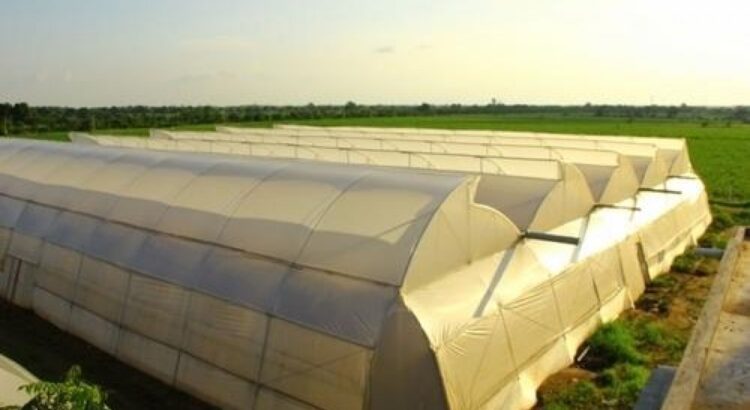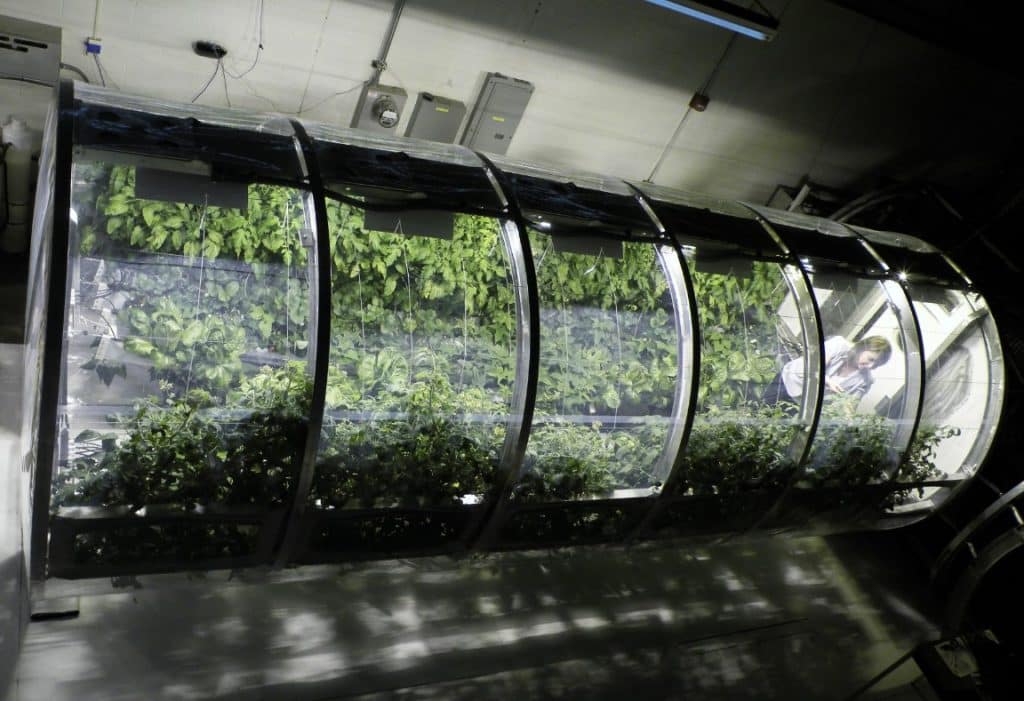Based on soil and climate
a. Polyhouse
- Refers to a structure covered with polythene sheet, typically with a metallic or bamboo frame.
- Provides protection from rain, wind, frost, and pests and Often used with drip irrigation and fertigation systems.
- Example Crops: Tomato, cucumber, capsicum, strawberry, flowers.
- It includes Naturally ventilated and environmental controlled polyhouses
- Naturally ventilated polyhouse do not have any environmental control system except for the provision of adequate ventilation and fogger system to prevent basically the damage from weather aberrations and other natural agents.
- Environmental controlled polyhouses helps to extend the growing season or permits off-season production by way of controlling light, temperature, humidity, carbon-dioxide level and nature of root medium.

Advantages:
- Cost-effective and easy to construct.
- Protects crops from adverse weather and pests.
- Suitable for small and medium-scale farmers.
Limitations:
- Limited lifespan of polythene covers (usually 2-3 years).
- Less precise environmental control compared to glass or hi-tech greenhouses.
b. Shade House / Screen House
- Refers to a structure covered with shade net or screen to reduce sunlight intensity and protect from pests.
- It reduces temperature, light intensity, and water loss and usually used for seedlings, shade-loving crops, or delicate flowers.
- Example Crops: Ornamental plants, nursery seedlings, shade-loving vegetables like lettuce and spinach.
- Nurserymen use these structures for the growth of hydrangeas and azaleas during the summer months.
- Apart from nursey, flowers and foliage which require shade can also be grown in shade houses. E.g. Orchids.
- These shade structures make excellent holding areas for field grown stock while it is being prepared for shipping to retail outlets.
- Shade houses are most often constructed as a pole-supported structure and covered with either lath (lath houses) or polypropylene shade fabric.

Advantages:
- Simple and low-cost.
- Protects crops from excessive sunlight, wind, and pests.
- Ideal for nurseries and propagation.
Limitations:
- Limited environmental control.
- Not suitable for crops requiring strict temperature regulation.
c. Rain Shelters / Low Tunnels
- Refers to a simple structures with low polythene or plastic covers to protect crops from rainfall or frost.
- Temporary or semi-permanent; easy to install and Provides microclimate modification for young crops or seasonal vegetables.
- Example Crops: Spinach, lettuce, radish, young tomato seedlings.
- Conserve warmth, stimulate germination and early growth, protect plants from frost injury in cold condition.
- Protects from birds and pests.

Advantages:
- Very low cost.
- Easy to manage and move.
- Provides protection against rain and frost.
Limitations:
- Minimal control over temperature, humidity, or light.
- Short-term solution suitable for seedlings or early crop stages.
d. Shade house/Lath House
- Cut down the solar radiation
- Prevent scorching or wilting of leaves caused by marked temperature increase.
- Ranging from 25% to 75% capacity and is suitable for leafy vegetables and ornamental grass.

e. Net houses
- Perforated screen primarily to act as a barrier for the entry of insects and pests.
- Insect-proof nylon sets are used and higher mesh are effective means to control entry of most flying insects.
- Net houses are widely used as propagation structures in tropical areas, where artificial heating is not required and artificial cooling is expensive. In these areas, net houses may be constructed with roofs covered with glass or plastic film and its sides are covered with wire net.
- It provides necessary ventilation and maintains an ideal temperature for germination of seeds and subsequent growth of the seedlings.
- The roof of net house may be covered with gunny cloth or even with live plant creeper to cut off the solar radiant energy and to keep the house cool.
- Black, green, and white coloured nets are used, while black colours are the most preferred as it retains heat outside.

f. Growing rooms:
- A growing room is an insulated building from which natural light is usually excluded.
- In it, illumination is provided by artificial means. Growing rooms are now widely used commercially for the production of seedlings of bedding plants, tomatoes and cucumbers in most advanced countries.
- The seedlings are usually grown in trays or pots kept on benches.

g. The automatic greenhouse
- The modern greenhouses can be almost completely automated thus assisting propagation.
- For instance, by the use of thermostat, air and bed temperature can be maintained as per the requirement.
- Similarly, automatic ventilation allows the ventilators to open and close in relation to temperature.
- Even, automatic systems of irrigation are installed in the modern greenhouses and water is supplied to the plants through drip or trickle system to each pot or plant by individual nozzle of time switch.
